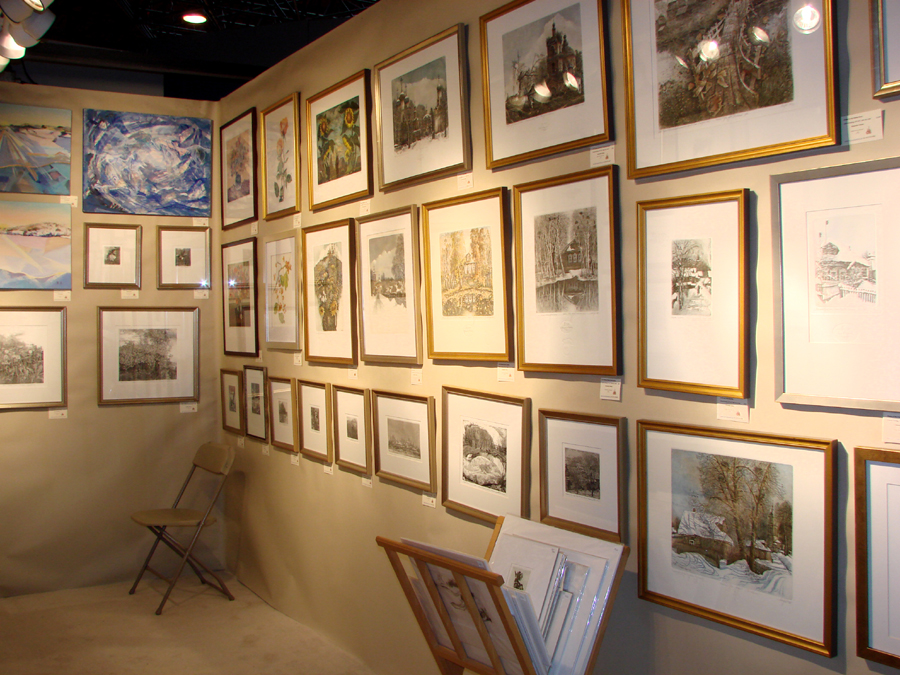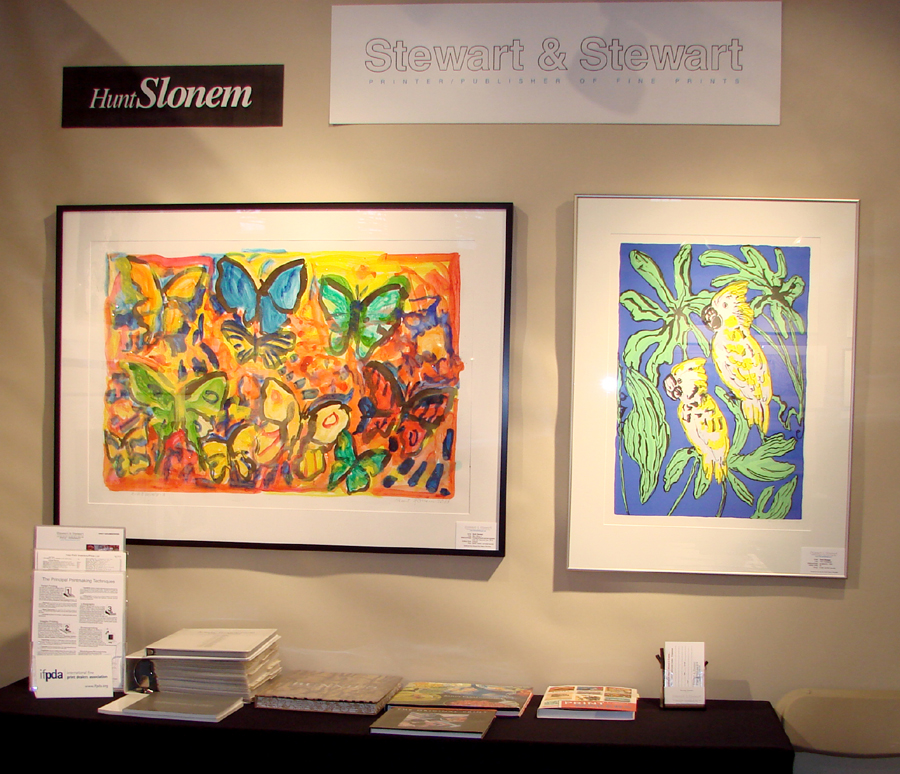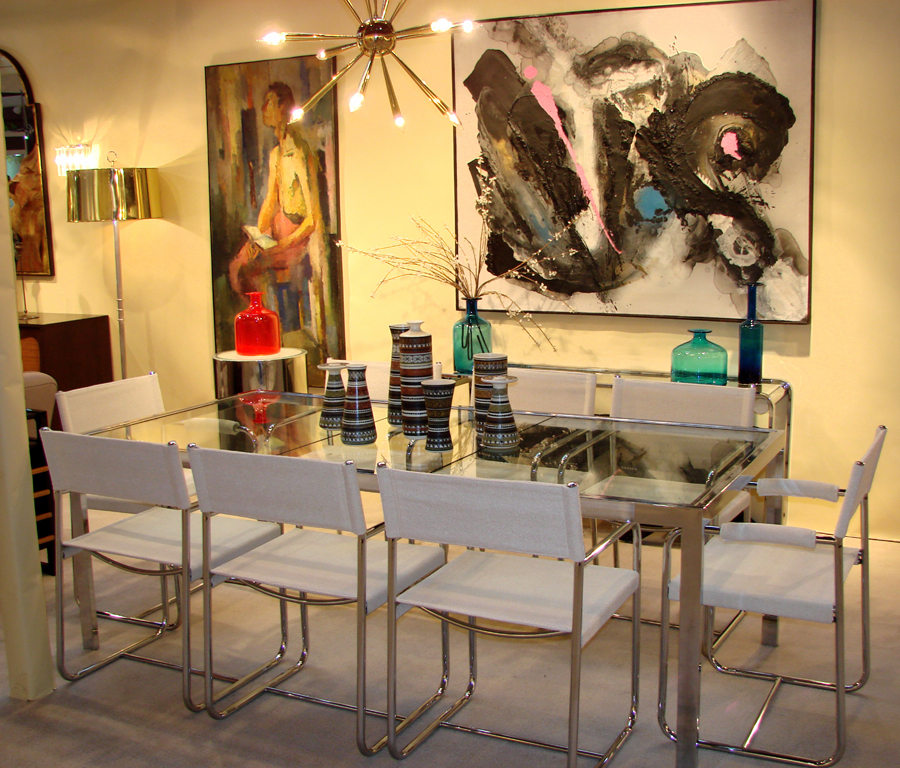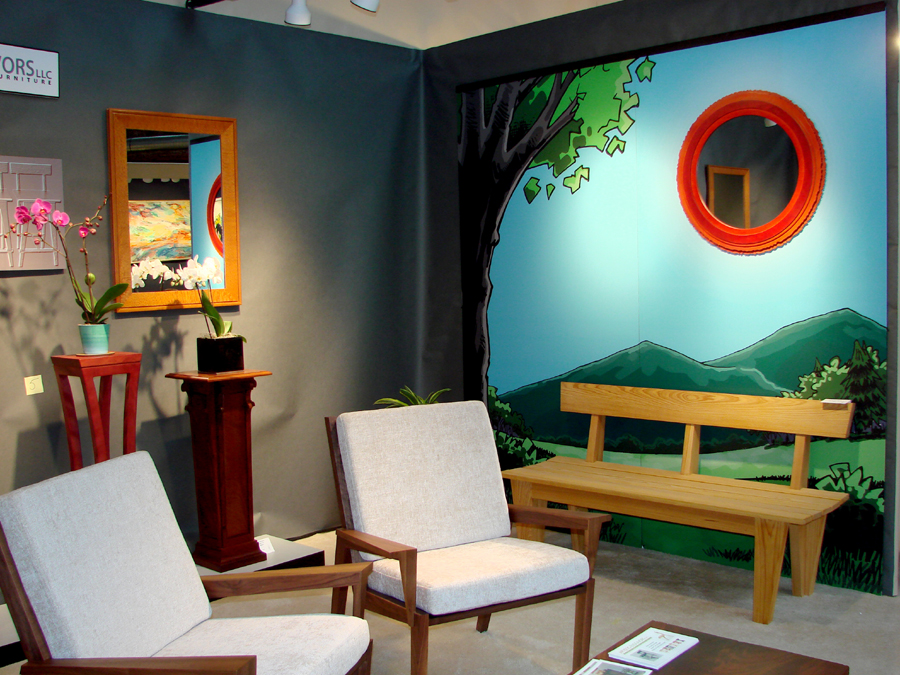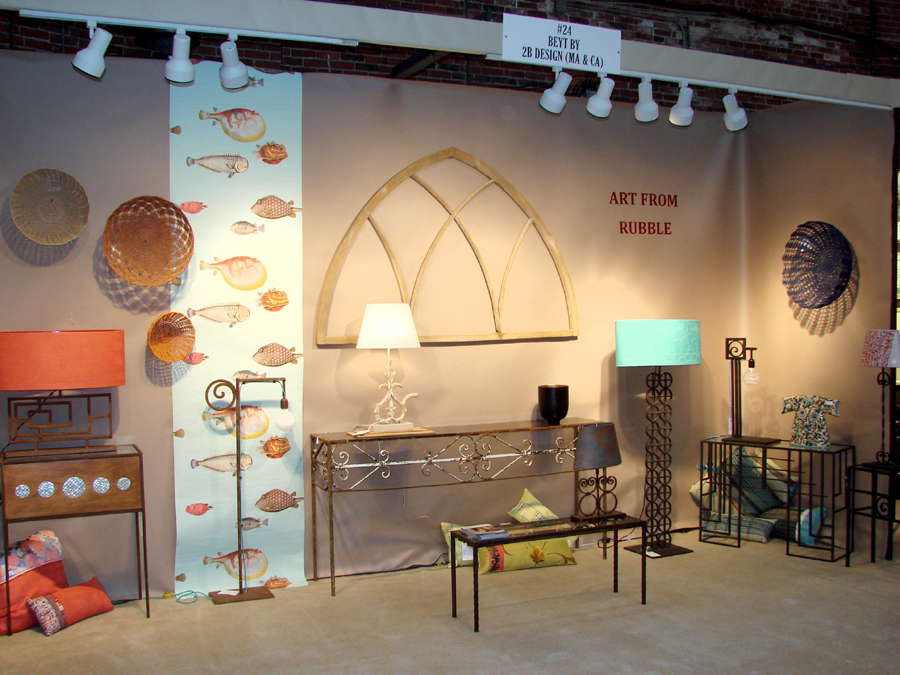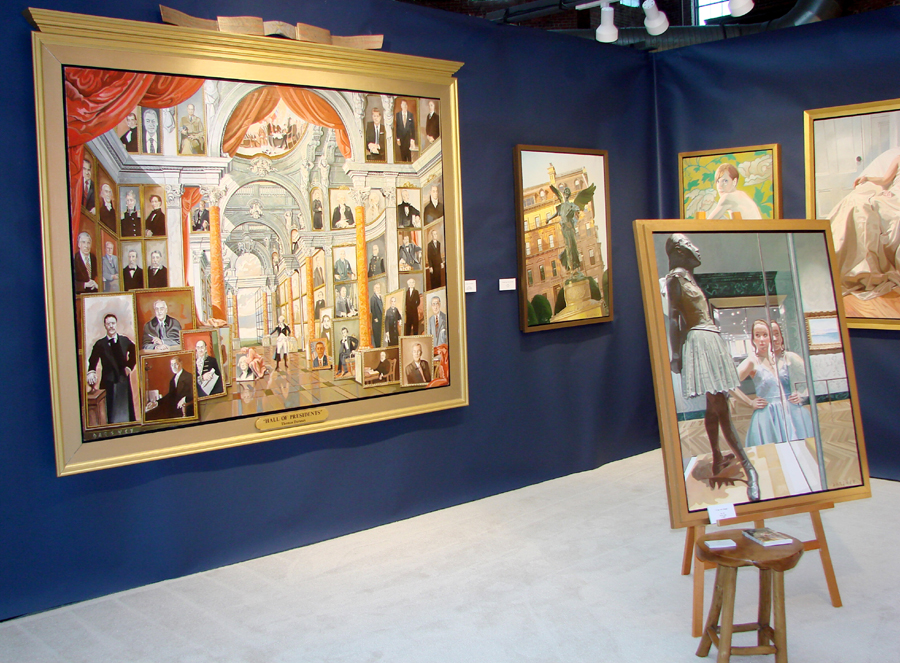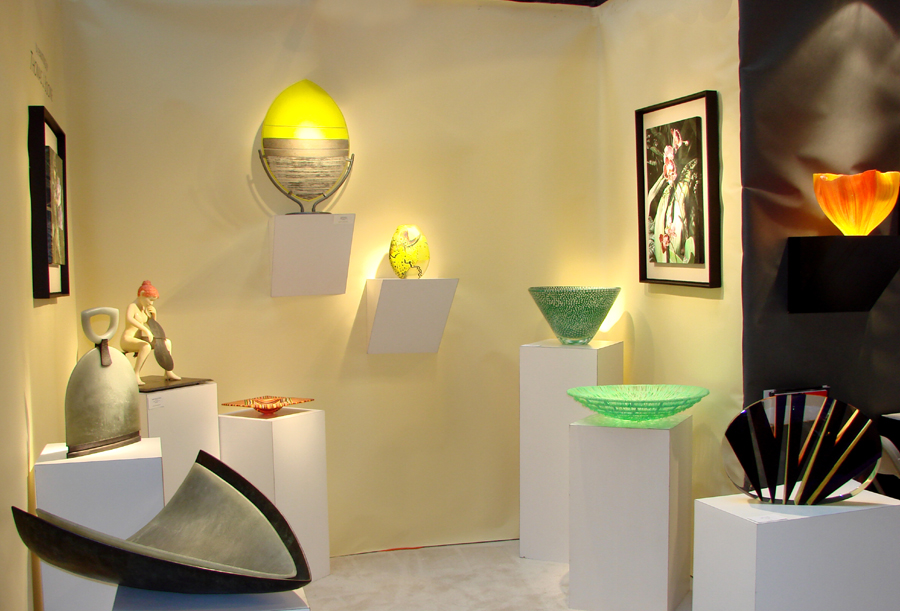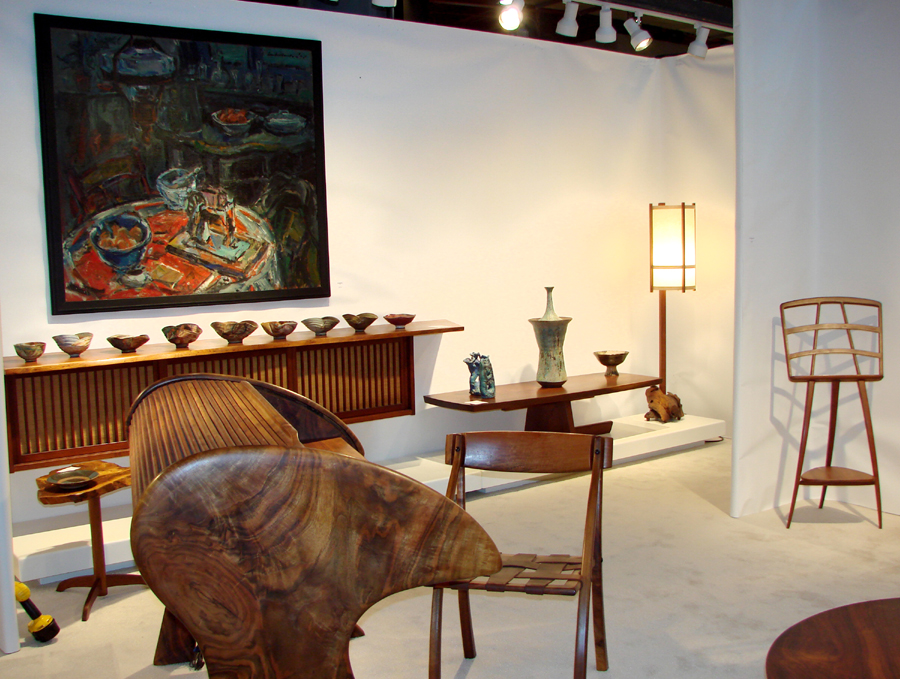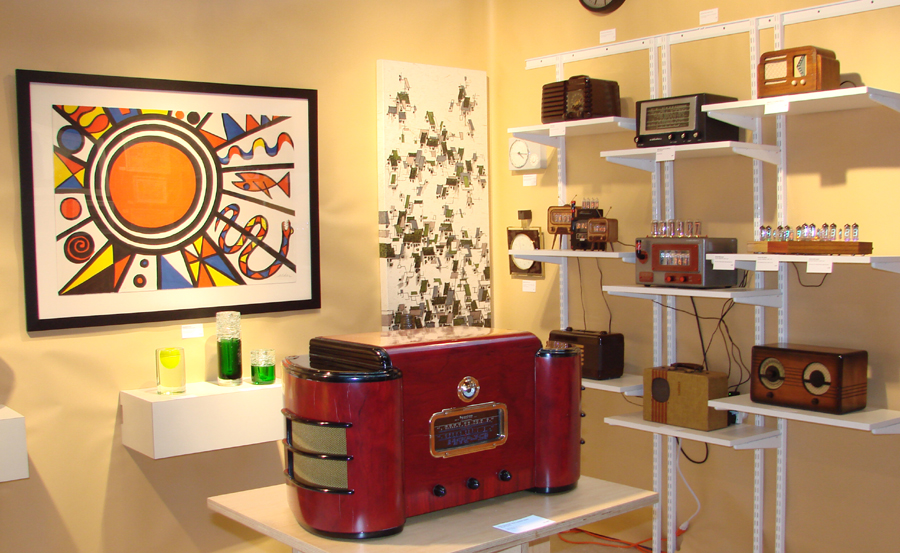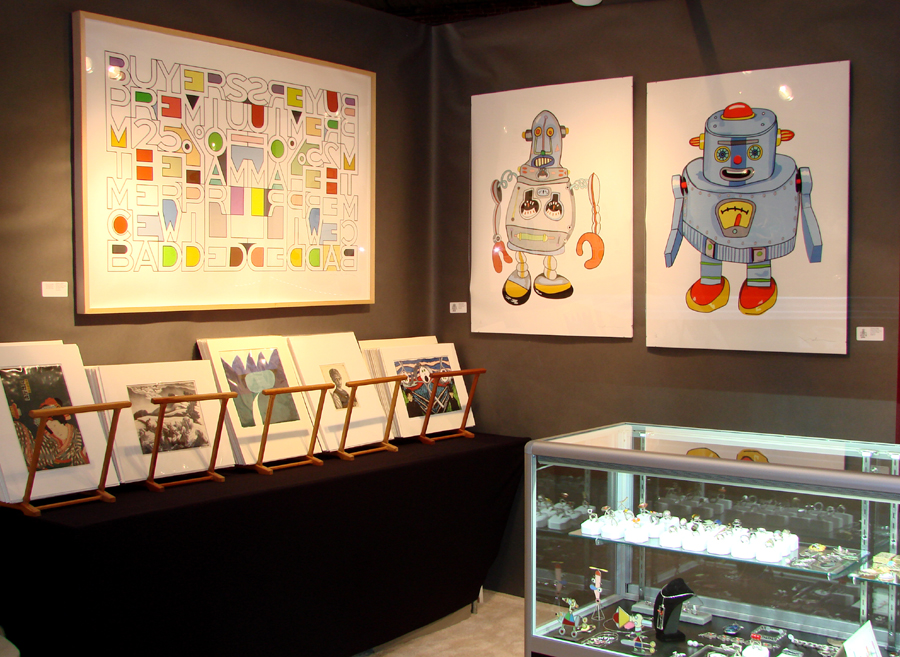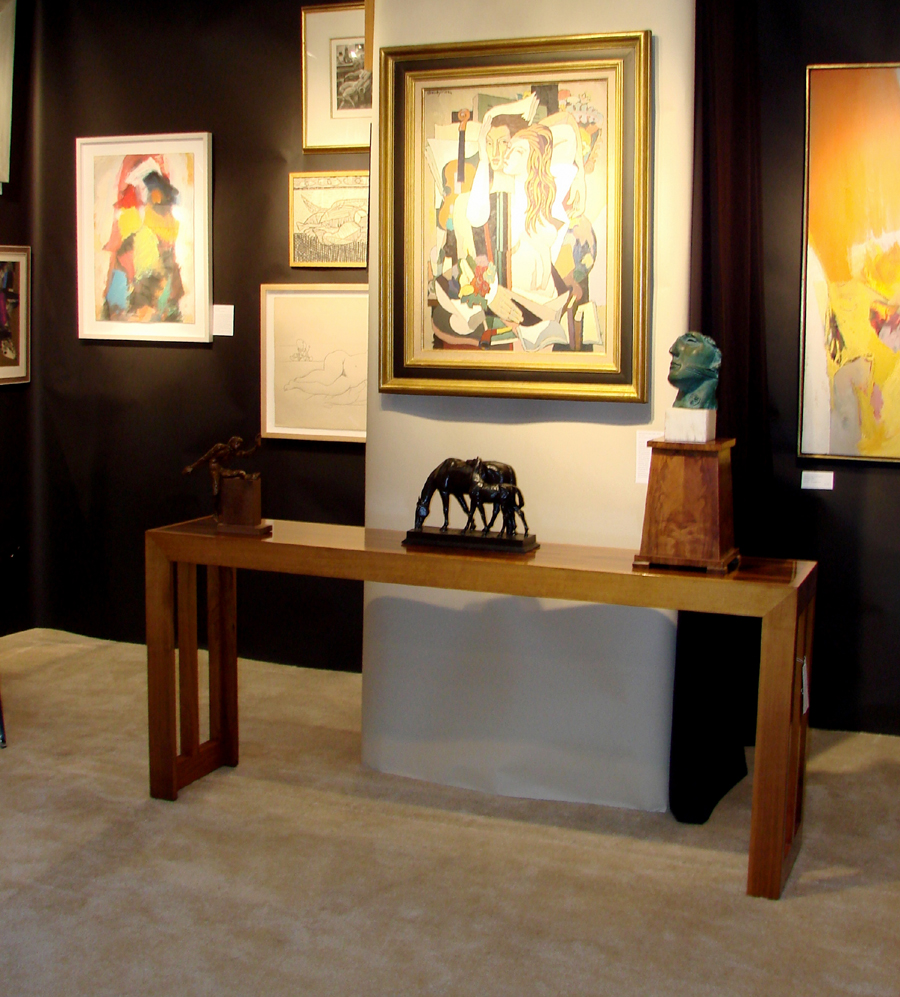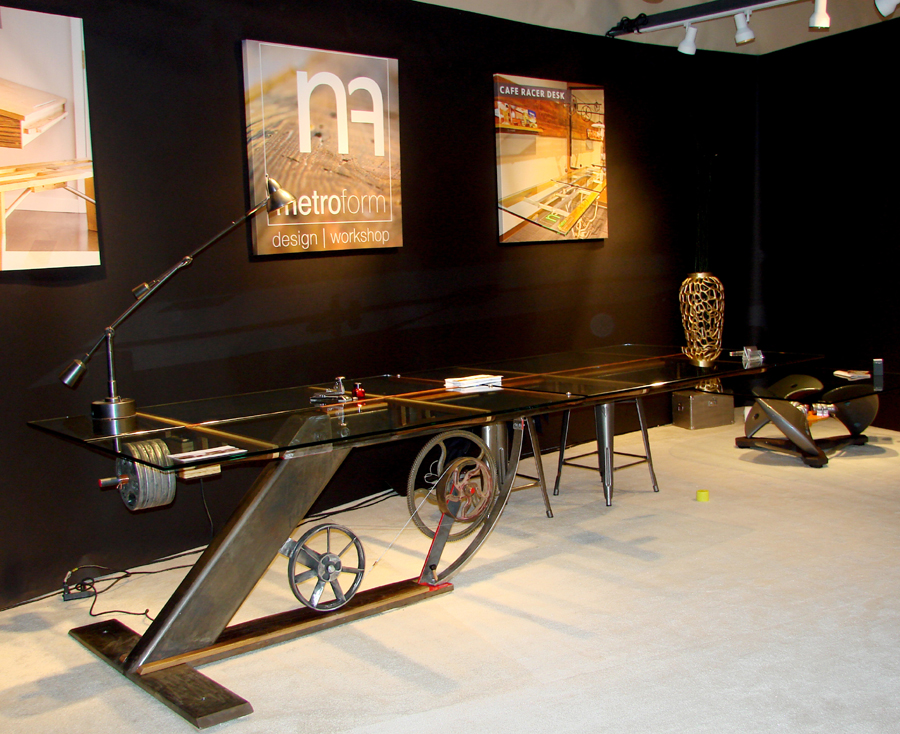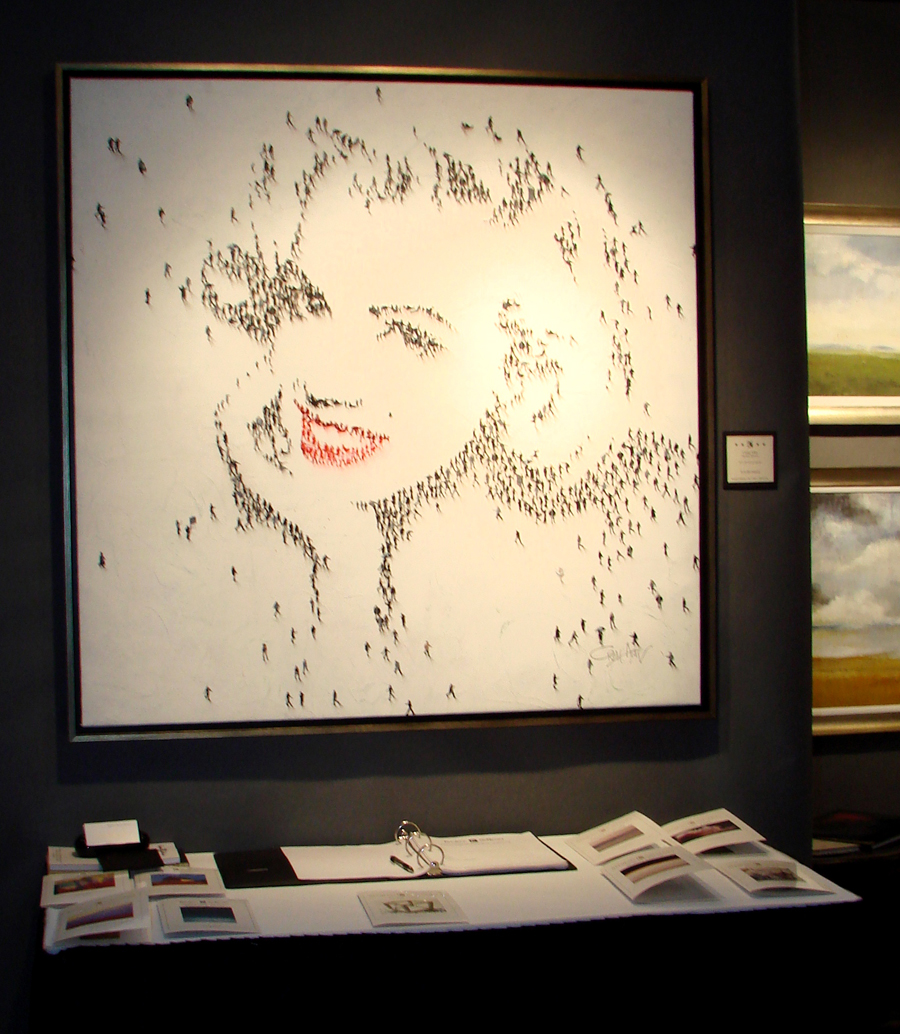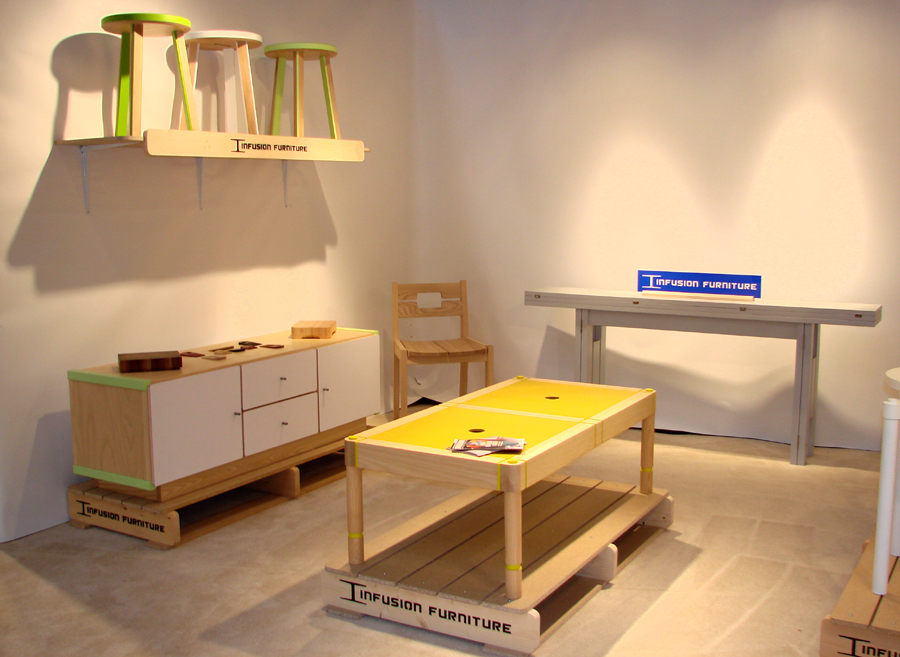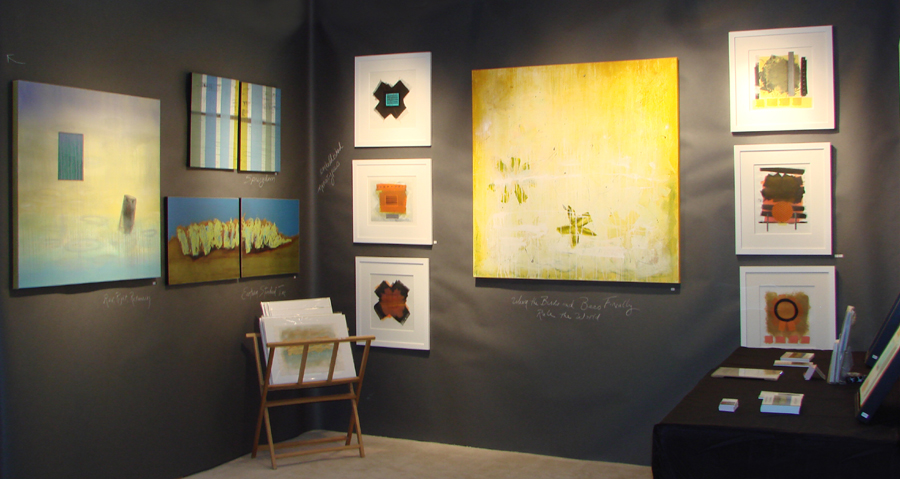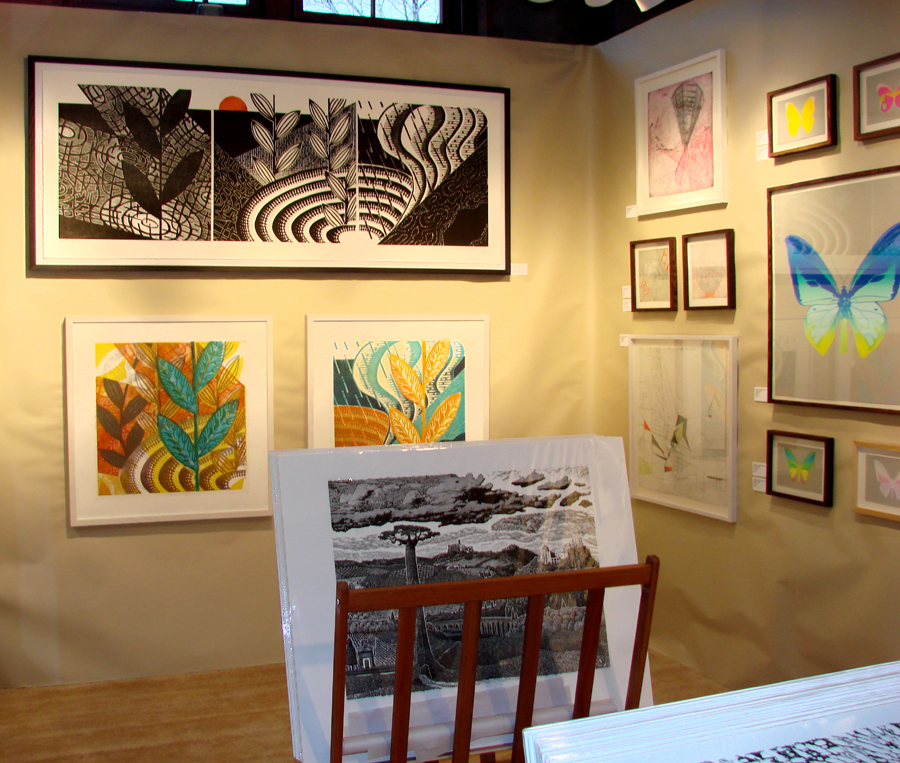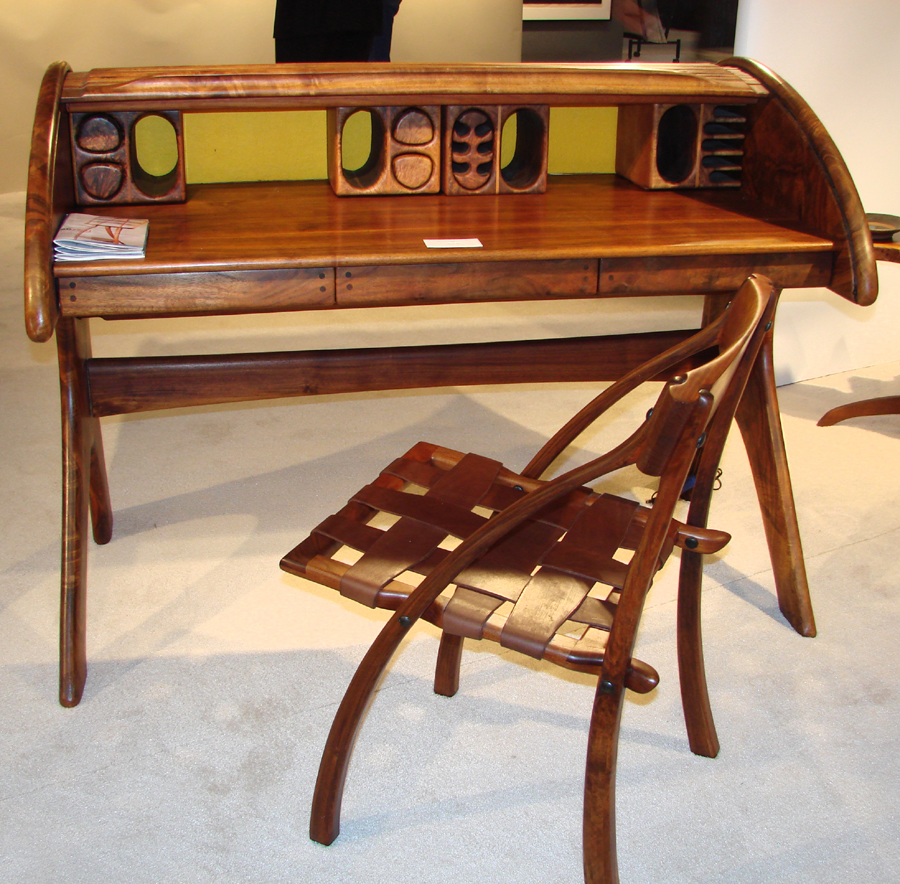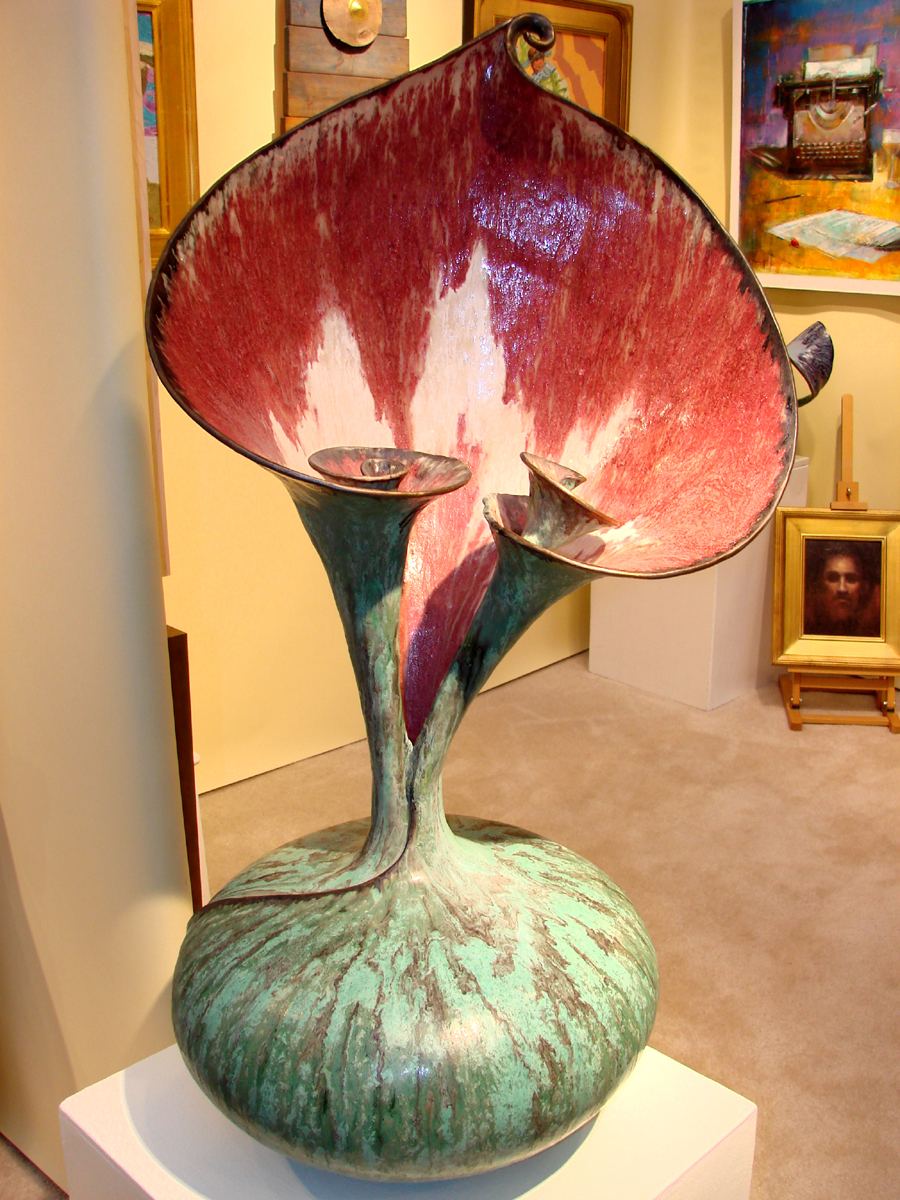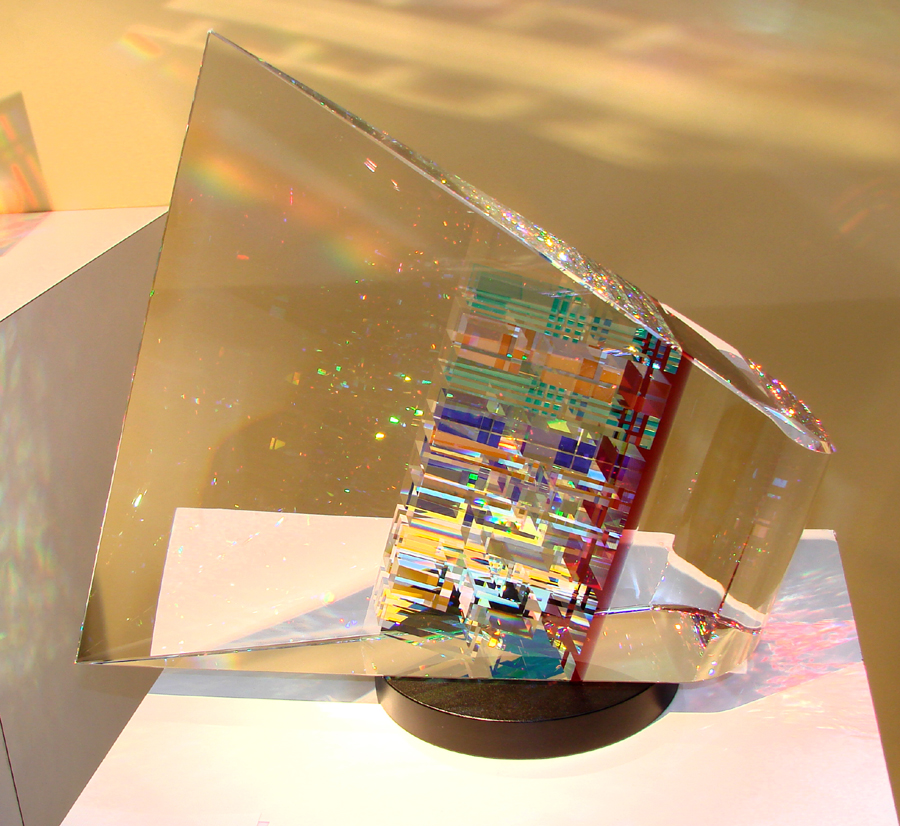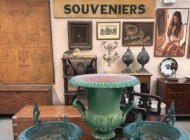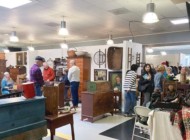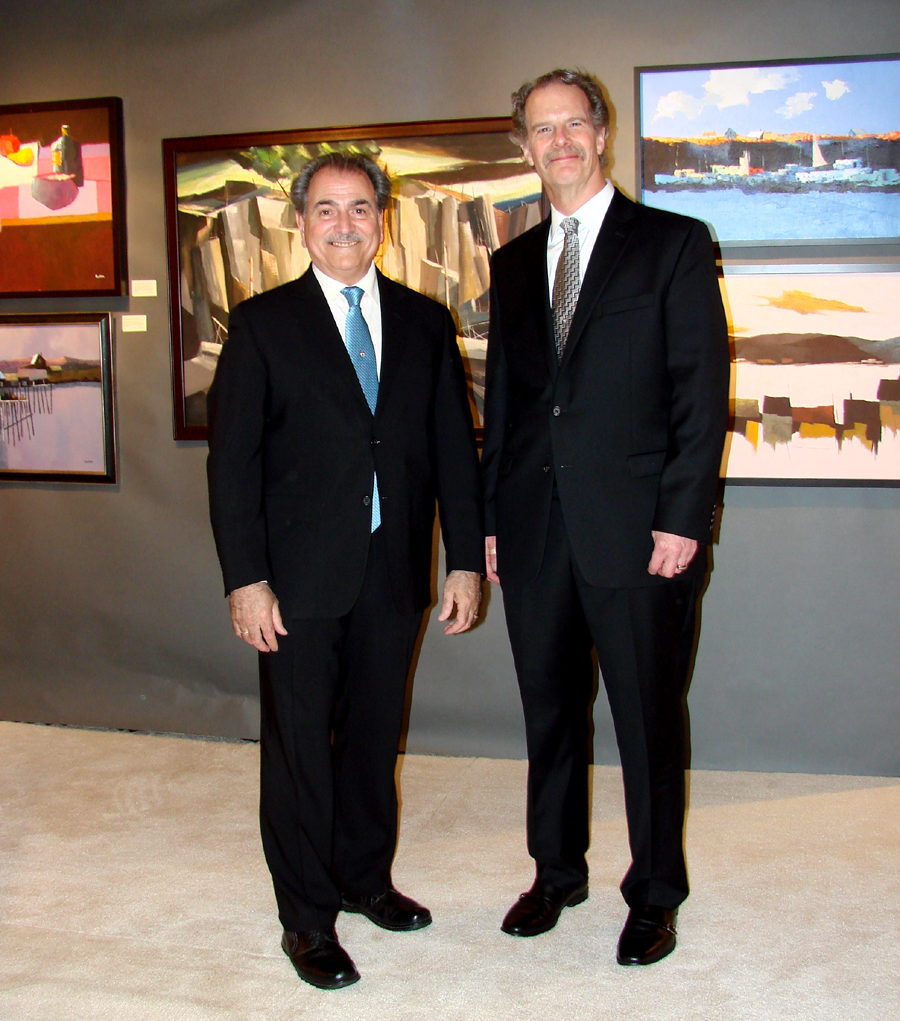
Tony Fusco, left, and Bob Four of Fusco and Four produce the Boston Design Week events and this show, as well as exhibiting in the show.
Review and Photos by Rick Russack
BOSTON, MASS. — Capping off the 12-day festival known as Boston Design Week, the Boston Print Fair and AD 20/21 took over the city’s historic Cyclorama building April 7–10. More than 50 booths offered some of the finest vintage and contemporary furniture, jewelry, studio ceramics, glass and prints, all primarily created over the last 100 years. The event, produced by Tony Fusco and Bob Four, brought together a show that displayed great things at prices all could afford. Fusco told Antiques and The Arts Weekly that they deliberately select exhibitors offering a range of price points so that attendees “do not suffer an attack of sticker shock” when visiting the show. During the gala preview attended by more than 300 people on April 7, attendance at the show was up about ten percent over last year.
The Cyclorama building dates back to 1884. It was built to display the cyclorama of the Battle of Gettysburg, a 400-by-50 foot painting designed to be displayed in the round. Cycloramas went out of fashion by the end of the Nineteenth Century, and the building has seen many uses since then, including hosting the Ellis Memorial Antiques Show for many years. The building’s main feature is a circular space, 127 feet in diameter. Not all shows could utilize the large circular space effectively, but this one did.
The Moderne Gallery from Philadelphia, had outstanding examples of midcentury designer furniture, including several pieces by George Nakashima (American, 1905–1990), Wharton Esherick, (American, 1887–1970) and Arthur Espenet Carpenter (American, 1920–2006). Priced at $125,000 was a “rolling desk” by Carpenter, a self-taught designer and furniture maker. His works are in the Smithsonian Institution, the Museum of Modern Art and other institutions.
Moderne also offered a cherry and walnut sofa with a rounded back made by Esherick in 1968. They refer to the sofa as “a signature design by the dean of American Craftsmen.” Esherick received many awards for his work, including a gold medal for craftsmanship from the American Institute of Architects, awarded posthumously in 1971, and is considered one of the founders of the studio furniture movement. Moderne also had a selection of Nakashima furniture: a tripod end table, a wall-hung case and a round coffee table. It was the firm’s first time exhibiting at this show, and the dealer reported making some good contacts.
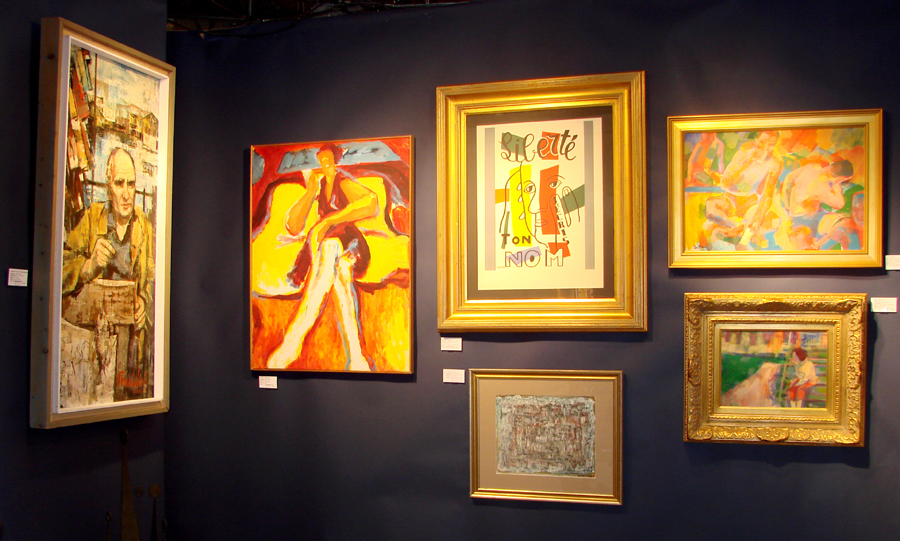
The lithograph by Fernand Leger (French, 1881–1955), in the center of the wall, hangs in the booth of William Jeffrey Gallery, Florham Park, N.J. It was done in 1953 and the asking price was $3,500. The booth included studio pottery and glass, along with paintings and sculptures.
Palette Contemporary Art and Craft, Albuquerque, N.M., brought some unusual offerings, including a grouping of vintage radios, some of which had been converted with nixie tubes to function as clocks, weather stations, etc. Nixie tubes were developed in the mid-1950s and, according to Palette’s Kurt Nelson, were used in early computers. By removing the works in vintage radios and installing “new old stock” nixie tubes with modern circuit boards, the clocks, calendars and weather stations, pulse with color as they change to show the time, temperature, humidity, etc. They are made by Cristian Dragomirecsu and were priced between $375 and $2,000. Palette also had a selection of vintage Bakelite radios.
The show presented a good selection of studio pottery. The William Jeffrey Gallery, Florham Park, N.J., had three pieces of pottery by Vivika and Otto Heino, American Arts and Crafts potters who always signed their works jointly. Prices started at $450 for a small vase. There were also decorated bowls by Edwin and Mary Scheier, American potters who also collaborated on their work. Prices for their bowls began at $2,500. Also on display were three pieces of salt-glazed earthenware by Guido Gambone (Italian, 1919–1969), a ceramicist active in the 1950s and 1960s. A rectangular plate was priced at $2,000, and a bottle-shaped vase was offered at $2,500. A Picasso plate, “Trois Personnages,” 375/500, circa 1956, was priced $5,500.
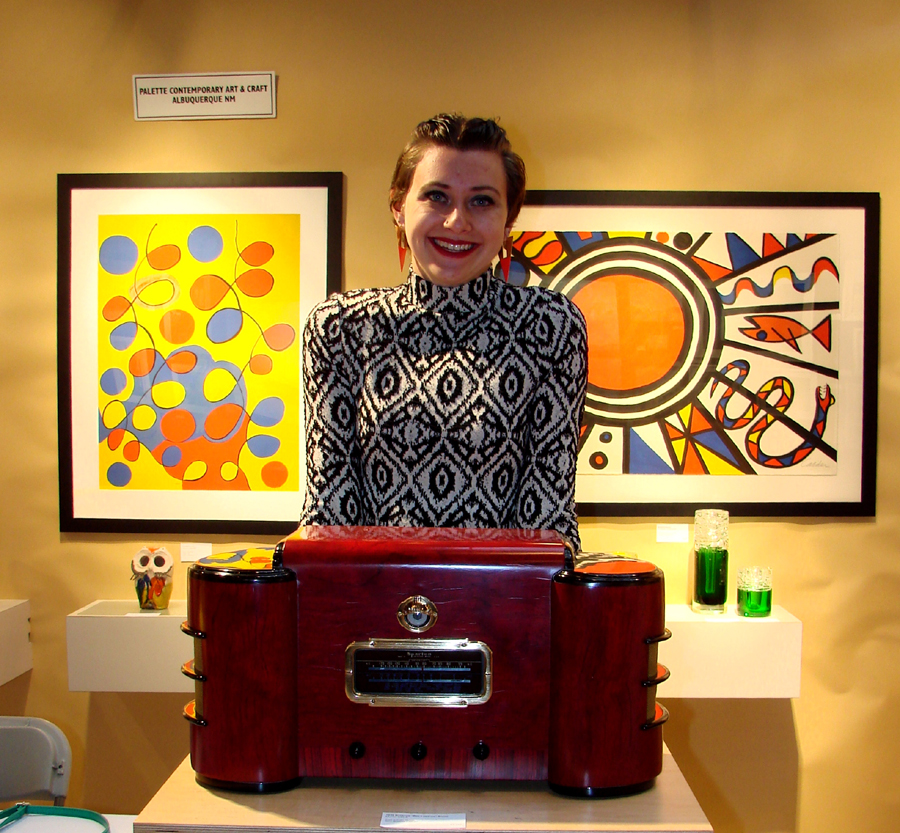
Ariana Mancino, Palette Contemporary Art and Craft, Albuquerque, N.M., with a 1939 “Red Lobster” radio made by Spartan. There were several vintage radios, some priced under $500.
Contemporary glass and ceramics were offered by several exhibitors. Bowersock Gallery, Provincetown, Mass., had several lovely porcelain sculptures by Susan Anderson. Anderson works with flower forms and especially seems to like calla lilies. Vases were available in different glazes and sizes. Prices ranged $140 for small vases to $800 for a truly exceptional large calla.
Habitat Galleries, West Palm Beach, Fla., offered glass creations by artists, including Harue Shimomoto and Jack Storms. A delicate, multilevel wall hanging by Shimomoto, “Bermuda Blue Glass,” was priced at $13,500. A shimmering geometric creation by Storms was offered for $24,000. Storms was present at the show and explained that his works utilize several layers of optical crystal, ground flat and polished to the point where it’s impossible to tell that the piece comprises several layers. He said he was very proud that one of his pieces was used in Guardians of The Galaxy, the 2014 film based on Marvel Comics characters.
The Print Fair was expanded this year to include 14 dealers. Available prints spanned hundreds of years — from Old Masters to contemporary. Many were light-hearted and would fit in almost any home. Denenberg Fine Arts had several prints by Edward Hagedorn, (American, 1902–1982) coinciding with the Hagedorn exhibit at the Danforth Art Museum in Framingham. The timing was fortuitous and they sold well. Stuart and Beverly Denenberg are the guest curators of the exhibit, which runs through May 15.
William Jeffrey Gallery had a Picasso collotype on paper, priced at $12,500, and a lithograph by Fernand Leger (French, 1881–1955), offered for $3,500. Edward Pollack Fine Arts, Portland, Maine, had a brightly colored 1970 lithograph by Alexander Calder, “Pyramides,” from an edition of 95, and he was asking $6,800. There was also a lithograph by Miro priced at $20,000. Gallerie Camille, from Detroit, Mich., had a set of inkjet prints that would definitely have appealed to younger shoppers. The subjects were whimsical toy robots, done by Adnan Charara, a Lebanese American artist working in Detroit. The editions, limited to 12 and 14 different subjects, were available in two sizes. The largest were priced at $3,000. A gallery whose name may have been inspired by James Bond, From Russia With Art, Cambridge, Mass., had dozens of black and white etchings, all of Russian subjects, done by Alexander Vetroz.
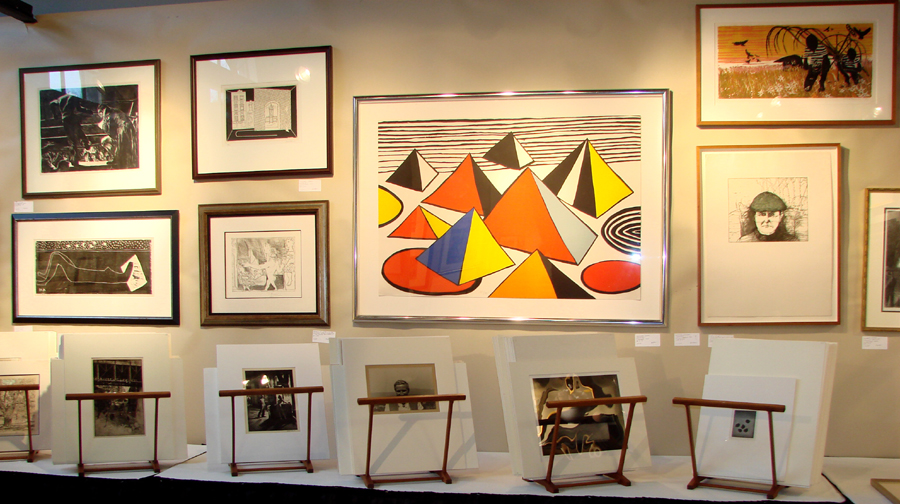
Edward T. Pollack Fine Prints, Portland, Maine, had a wide selection of prints, including this 1970 lithograph by Alexander Calder, “Pyramides.” One of an edition of 95, it was priced at $6,800.
Jim Sherraden, Nashville, Tenn., is an artist and a master printer, and his booth had numerous fine prints. He is also a letterpress printer, manager, chief designer and archivist of Hatch Show Print shop in Nashville. The shop has been in business since 1879 and still operates, using wood type. It specializes in posters, and being a division of the nonprofit Country Music Hall of Fame and Museum, it produces posters for many of the top performers in the world of country music.
Renjeau Gallery, Natick, Mass., had a Pop-art style oil on canvas of Marilyn Monroe, done by Craig Alan (American, b 1971). Alan’s unusual style utilizes hundreds of tiny figures to form the portrait. It was priced at $13,500. Renjeau also had two boldly colored acrylics by Karen Jones of New England-style buildings, priced at $4,100 each. For those who prefer vintage cars and trucks to robots, Gleason Fine Art, Boothbay Harbor, Maine, had oils of pickup trucks, one painted red, white and blue, titled “Stars and Stripes.” The paintings were done by Kevin Beers and priced from $1,800 to $8,000 depending on size.
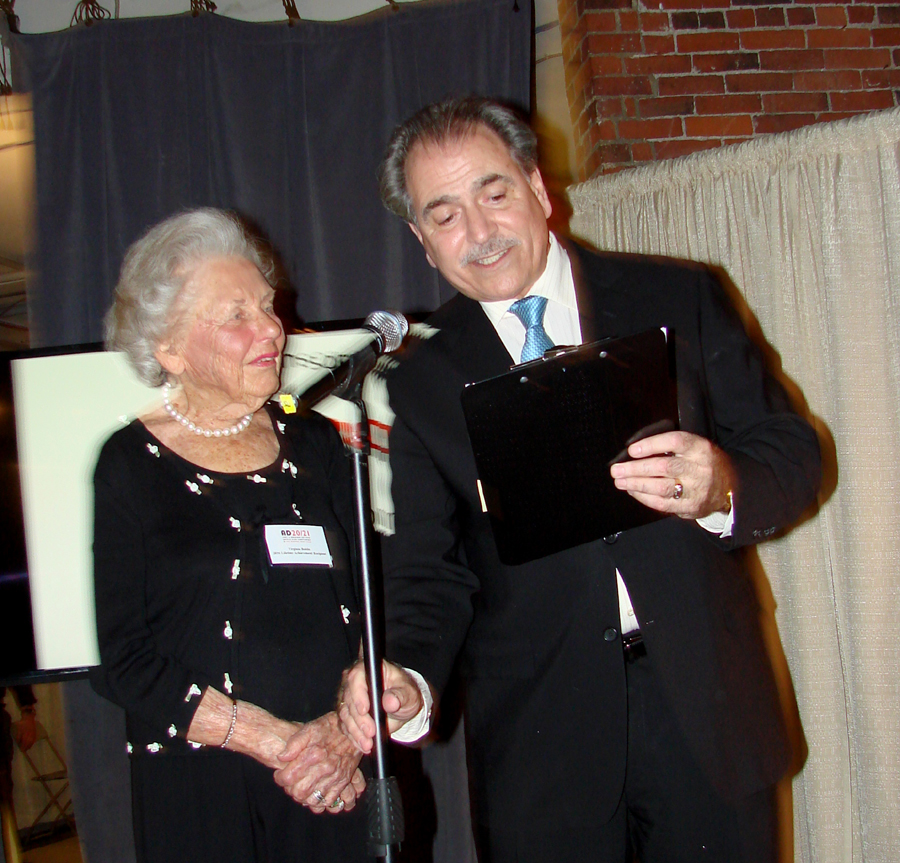
Tony Fusco presented a Lifetime Achievement Award to Virginia Bohlin, who spent nearly 40 years writing about art and antiques for The Boston Globe.
Virginia Bohlin, was the recipient of the 2016 Lifetime Achievement Award, presented by Tony Fusco, of Fusco and Four, producers of AD 20/21. Bohlin, who spent 73 of her 96 years working at Boston newspapers, was celebrated for a life artfully lived. For more than 39 years she wrote the Antiques & Collectibles column for The Boston Globe. The award ceremony, during the gala preview, was well attended and included several of her family members.
After the show, Tony Fusco told Antiques and The Arts Weekly that the show went well. “Our attendance was up over last year and the weather did not keep people from the preview. We had more people on Sunday than we had on Saturday, even though the hours were shorter. Most dealers did well. Palette was back after missing the last two shows and they did well. They told me they had sold several watches. The Print Fair was expanded over previous years because of the interest, and several of those dealers, including Jordan Stewart, were enthusiastic and made multiple sales.”
He added, “We saw a younger crowd, and they were buying. We try to make sure that we have exhibitors with objects at various price points, which we think helps attract younger buyers. I think one of the keys to attracting younger buyers is to offer iconic material from their generation. The lectures were packed, especially Saturday’s talk by Mark Pasnik and Chris Grimley, authors of Heroic: Concrete Architecture and The New Boston. Several of the world’s leading architects designed buildings in Boston between 1960 and 1976. Although some have called for destruction of some of those buildings, such as the Boston City Hall, the authors are finding that many are now beginning to appreciate these buildings.”
The show included four booths of custom furniture craftsmen. Fusco said, “Each of them told me that they not only sold well from what they brought to the show, they each had discussions with potential clients looking to have several pieces made.”
For additional information, www.fuscofourmodern.com or 617-363-0406.
Gallery

